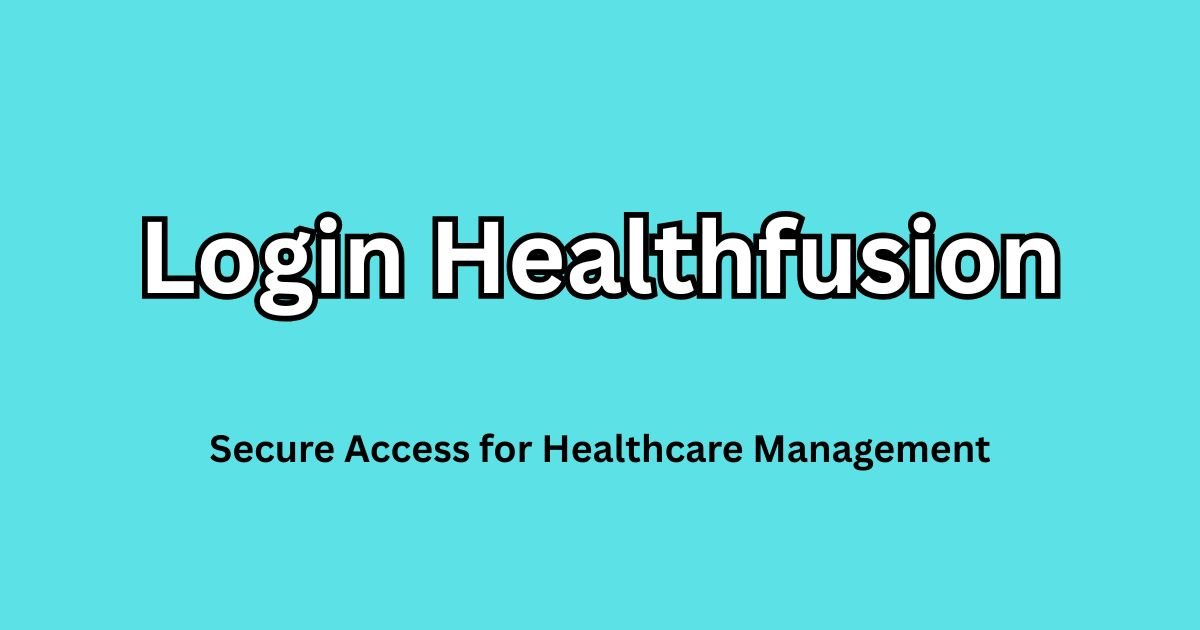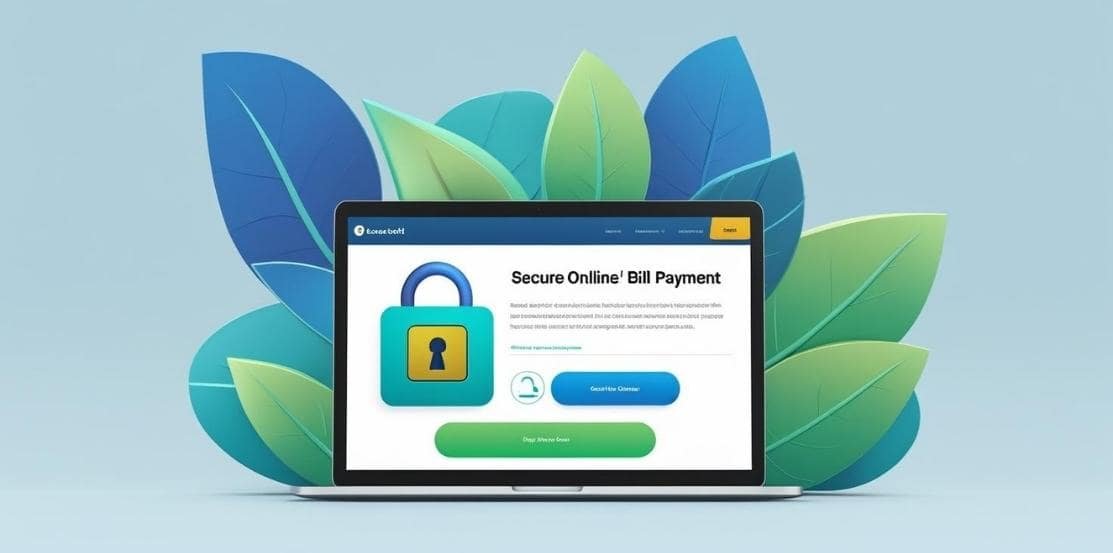In today’s rapidly evolving healthcare landscape, efficient patient care and management are essential. With the digital transformation of the healthcare industry, platforms like HealthFusion have emerged to streamline processes, enhance communication, and ensure better service delivery. One of the core functionalities of HealthFusion is its login system, which allows healthcare providers and professionals to access and manage important patient data and administrative tasks securely.
This article explains how the Login Healthfusion works, its significance in healthcare management, and how to use it safely and efficiently.
What is HealthFusion?
HealthFusion is a cloud-based platform that provides a comprehensive suite of tools for healthcare management. It helps medical professionals such as doctors, nurses, and administrative staff to manage a wide range of tasks, from patient records to billing, scheduling, and telemedicine services. The platform integrates Electronic Health Records (EHR), practice management, and telemedicine features, all in one place.
HealthFusion is specifically designed to streamline operations within healthcare facilities, making it easier for practitioners to provide quality care, reduce administrative burden, and enhance patient satisfaction.
Importance of HealthFusion in Healthcare Management
The need for digital solutions in healthcare has grown tremendously in recent years. With the rise of online consultations, remote healthcare, and electronic health records, platforms like HealthFusion play a crucial role in the effective management of healthcare services. Here are a few reasons why HealthFusion is vital:
- Improved Efficiency: HealthFusion streamlines administrative tasks, reducing time spent on paperwork and enhancing workflow within healthcare facilities.
- Data Security: Patient data is sensitive and must be protected. HealthFusion ensures secure data storage and transmission, complying with healthcare regulations such as HIPAA.
- Patient-Centered Care: The platform helps healthcare providers maintain accurate patient records, enabling better decision-making and personalized care.
- Cost Reduction: By automating various administrative tasks, HealthFusion reduces overhead costs and minimizes the chances of errors in patient records or billing.
Login Healthfusion Process
The Login Healthfusion process is designed to be straightforward, ensuring easy access for healthcare providers. Here’s a step-by-step guide to logging in to the HealthFusion platform:
Step 1: Visit the HealthFusion Website
To begin, go to the official HealthFusion website. Look for the “Login” button or option on the homepage.
Step 2: Enter Your Credentials
Once you click on the login option, you will be prompted to enter your login credentials. This typically includes:
- Username: This is the unique identifier you’ve created during registration.
- Password: Your password should be secure, ideally a mix of letters, numbers, and special characters.
Step 3: Secure Your Login
For additional security, HealthFusion may ask you to complete a verification step. This could involve:
- Two-Factor Authentication (2FA): This adds an extra layer of security by sending a code to your registered mobile device or email.
- Captcha: Some systems require you to complete a captcha to verify you’re a human and not a bot.
Step 4: Access Your Dashboard
Once your credentials are verified, you will be granted access to the HealthFusion dashboard. Here, you can manage your healthcare services, access patient records, view appointment schedules, and more.
Step 5: Logout After Use
For security purposes, it’s important to log out when you’re done using the platform. This ensures that unauthorized individuals cannot access sensitive data.
Features Accessible After Login
After successfully logging in to HealthFusion, you gain access to a range of features designed to make healthcare management easier:
- Electronic Health Records (EHR)
HealthFusion allows healthcare providers to access and update patient records in real-time. This eliminates the need for paper records and ensures that patient information is easily accessible by authorized staff at any time. - Practice Management Tools
The platform helps manage appointments, billing, and other administrative tasks. This reduces manual work and helps avoid scheduling conflicts or billing errors. - Telemedicine Services
In today’s world, remote consultations have become a crucial part of healthcare. HealthFusion includes telemedicine features that allow doctors to conduct virtual consultations with patients, enhancing patient care while maintaining safety and convenience. - Billing and Payment Management
The platform offers billing solutions that allow healthcare providers to manage invoices, payments, and insurance claims. This streamlines the financial aspect of healthcare management and reduces errors. - Reports and Analytics
HealthFusion provides data analysis tools that allow healthcare providers to generate reports, track performance, and gain insights into patient care. This helps in making informed decisions to improve care quality.
How to Securely Use HealthFusion Login
Security is a major concern when it comes to healthcare platforms due to the sensitivity of patient data. Here are a few tips on how to securely log in and use HealthFusion:
1. Use Strong Passwords
Always create a strong password that includes a combination of uppercase letters, lowercase letters, numbers, and symbols. Avoid using easily guessable information like names or birthdates.
2. Enable Two-Factor Authentication
If available, enable two-factor authentication (2FA) to add an extra layer of security. This ensures that even if someone has your password, they won’t be able to log in without the second authentication step.
3. Log Out When Done
Always log out of the platform when you’re finished using it, especially if you’re on a shared computer. This prevents unauthorized users from accessing sensitive information.
4. Update Your Credentials Regularly
Periodically change your password and security questions to reduce the risk of unauthorized access. HealthFusion may prompt you to update your credentials for added security.
5. Avoid Public Networks
Do not access HealthFusion from public or unsecured Wi-Fi networks, as this could expose your login credentials to hackers. Always use a secure, encrypted connection.
Troubleshooting Login Healthfusion Issues
Sometimes, users may encounter issues when logging into the HealthFusion platform. Here are a few common problems and how to solve them:
Forgotten Password
If you forget your password, you can easily reset it by clicking on the “Forgot Password?” link on the login page. HealthFusion will guide you through the steps to reset your password securely via email or SMS.
Account Locked
After multiple unsuccessful login attempts, HealthFusion may temporarily lock your account for security reasons. If this happens, contact HealthFusion’s support team to regain access.
Browser Compatibility Issues
If you’re having trouble logging in, ensure that your browser is up-to-date and compatible with HealthFusion. Clearing your browser’s cache and cookies might also resolve some login problems.
Server or Connectivity Issues
In rare cases, there may be server or connectivity issues preventing you from logging in. If you suspect this is the case, check the HealthFusion website for any notifications or reach out to customer support.
Conclusion
HealthFusion is an essential tool for modern healthcare management. Its secure login system ensures that healthcare providers can access patient data and perform administrative tasks easily and securely. By following the simple steps outlined in this article, you can easily log in to the platform, access its features, and maintain a high level of data security.
As digital healthcare solutions continue to grow, platforms like HealthFusion will remain crucial in helping providers deliver better care while reducing administrative burdens. Always make sure to follow best practices for login security to ensure the safety of patient data and comply with relevant regulations.




